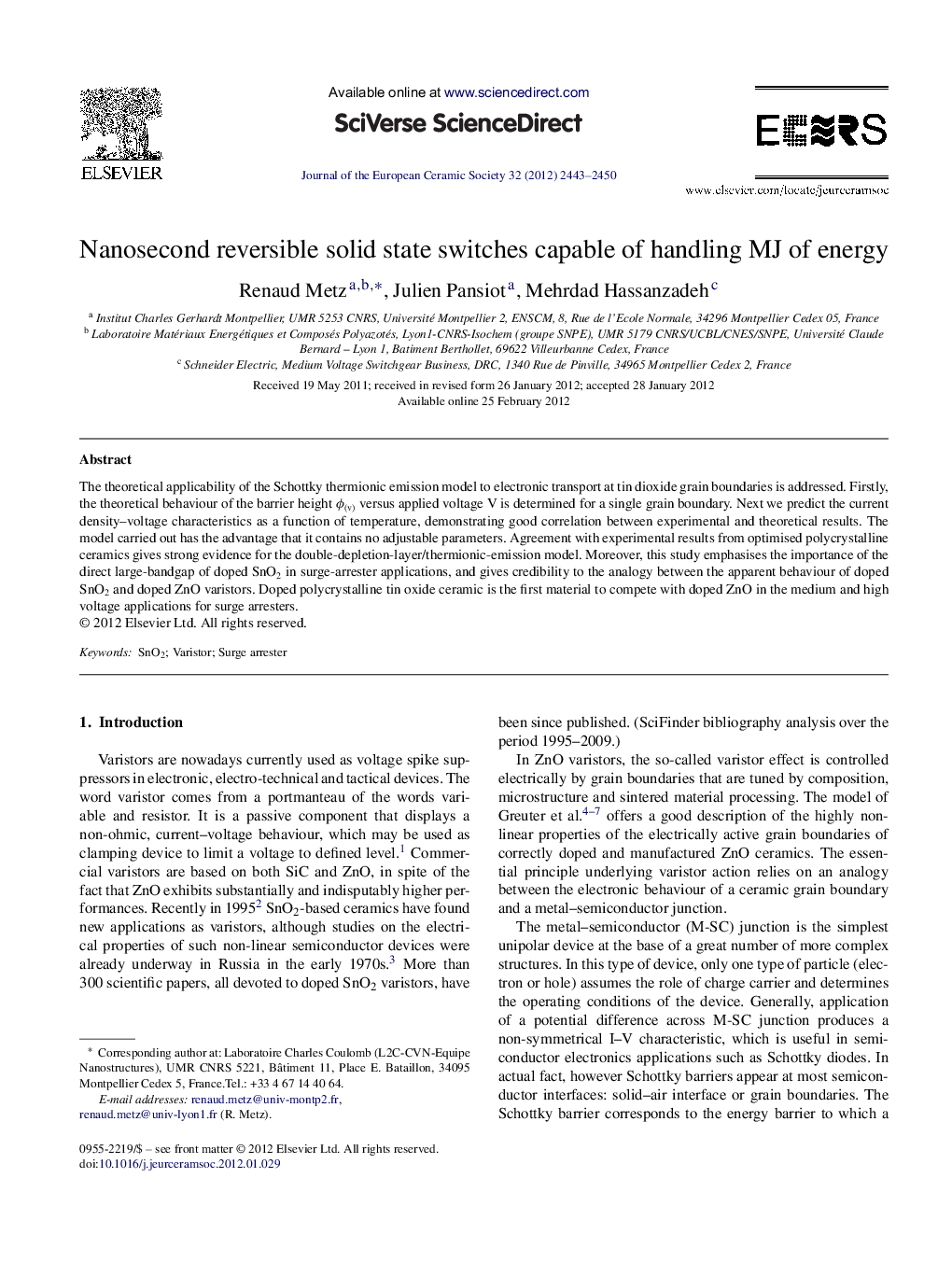| Article ID | Journal | Published Year | Pages | File Type |
|---|---|---|---|---|
| 1475320 | Journal of the European Ceramic Society | 2012 | 8 Pages |
The theoretical applicability of the Schottky thermionic emission model to electronic transport at tin dioxide grain boundaries is addressed. Firstly, the theoretical behaviour of the barrier height ϕ(v) versus applied voltage V is determined for a single grain boundary. Next we predict the current density–voltage characteristics as a function of temperature, demonstrating good correlation between experimental and theoretical results. The model carried out has the advantage that it contains no adjustable parameters. Agreement with experimental results from optimised polycrystalline ceramics gives strong evidence for the double-depletion-layer/thermionic-emission model. Moreover, this study emphasises the importance of the direct large-bandgap of doped SnO2 in surge-arrester applications, and gives credibility to the analogy between the apparent behaviour of doped SnO2 and doped ZnO varistors. Doped polycrystalline tin oxide ceramic is the first material to compete with doped ZnO in the medium and high voltage applications for surge arresters.
